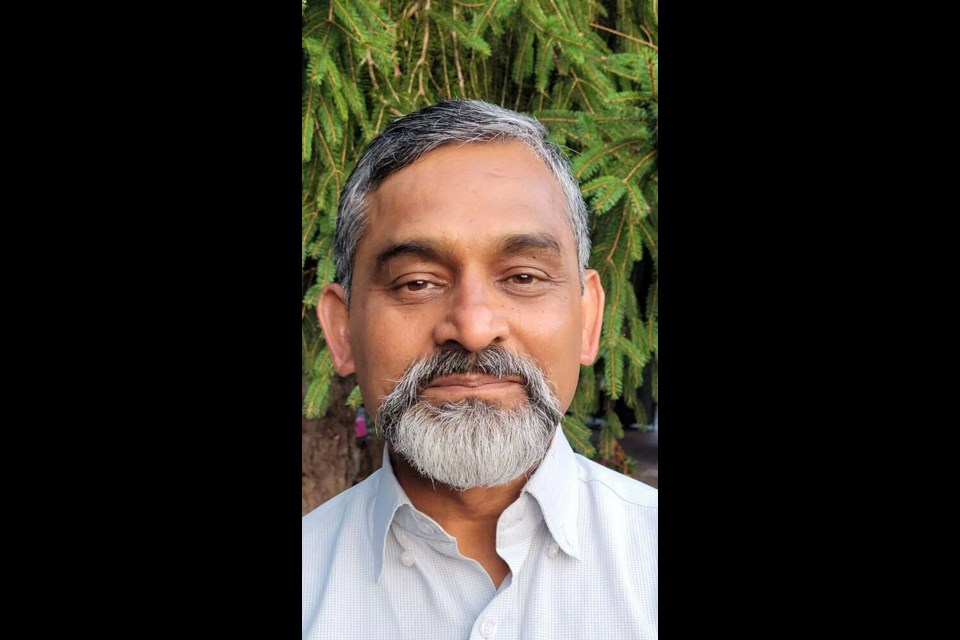Sanjiv Shrivastava
Website: VOTESANJIV.ca
Twitter: @SanjivVote
Nextdoor: Vote S.
Are you associated with or running as part of a slate? If so, which one?
No!
Do you live in the municipality where you are running, and if so, for how long? If not, what is your connection to that community?
Yes, 7yrs 10mts.
What is your occupation, and for how long?
Consultant, Researcher, Entrepreneur, Former Professor of Physics.
Tell us about your previous elected and/or community experience.
I volunteer as a data-scientist with Saturna Gulf Island Whale Sighting Network (SGIWSN). It is a volunteer citizen-led organization for monitoring and gathering field data on whale movements around Saturna, Pender and Mayne Islands. I have served on the Board of Directors of Canadian Multicultural Education Foundation for nine years. In addition, I have volunteered at iHuman, an inner-city youth society in Edmonton, where I developed alternate engagement models for marginalized youth to learn academic skills in an embedded education prototype initiative.
Why are you running? What’s your motivation?
Three events culminated in my decision to run: (i) witnessing the rude dismissal of community voices and concerns during the recent OCP meetings; (ii) the inherently biased OCP survey questionnaire and the subsequent draft report that disregards local concerns and broader contexts; and (iii) the rapid degradation of green-cover in the area, instead of ensuring food security and environmental sustainability in the climate crisis era. Additionally, I think we need compassionate, constructive, and collaborative solutions to issues such as housing, an issue that is driven by global trends and will be worsened by increasing density in rural communities such as North Saanich.
What are your top three issues?
• Promote, facilitate, and strengthen local food production for the enhancement of food security through the retention and expansion of ARL.
• Contain the indiscriminate depletion of green-spaces to protect and increase natural spaces that support the environment, human health, as well as land, marine, and air quality.
• Develop collaborative, compassionate, and local solutions to local problems based on empirical evidence.
What’s your vision for your community in 25 years?
The Capital Regional District’s Regional Growth Strategy (RGS) recognizes North Saanich as a major food supplier, with the potential to dramatically increase food production in the climate change era. We have abundant local expertise to find viable solutions to connect, train, and collaborate in increasing land use for food production within our community to address the logistics of food security for ourselves and our neighbours. I the next few years, would like to see North Saanich and sister municipalities emerge as leaders in environmentally sustainability and in maintaining a high quality of life using local collaborative strategies to tackle issues related to food, health, and housing.
What’s one “big idea” you have for your community?
We are blessed with the presence of diverse research and teaching organizations such as the Institute of Ocean Sciences and the Plant Health Research Centre in North Saanich, along with the nearby Geological Survey of Canada Pacific, Dominion Astrophysical Observatory, and the variety of higher education institutes in greater Victoria. As councillor, I would like to include the input of this wealth of local expertise to find solutions to local concerns within the context of regional and global trends. I see the possibility of creating North Saanich/the Peninsula as a centre of excellence for local solutions to globally connected challenges, while maintaining the distinct rural and farming character of our communities.



